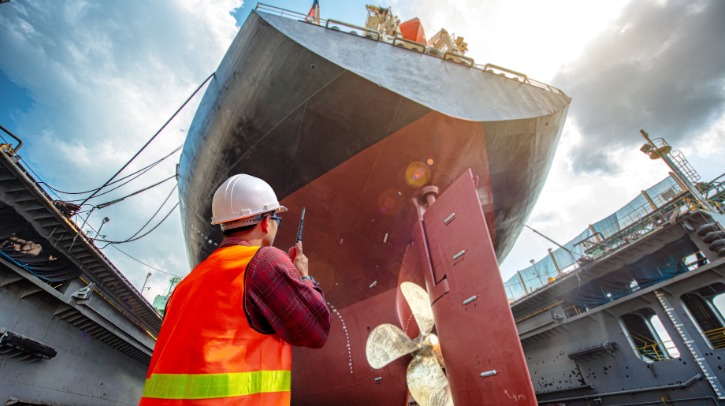Recently, I traveled to Louisiana to attend sea trials of a new battery hybrid ferry built for the Trust for Governors Island in New York. As an engineer, it’s easy to get lost in the technical details, especially around the hybrid components – the nondescript, quietly whirring white cabinets that now accompany conventional diesel engines in machinery spaces, the state-of-the-art batteries in their specialized, climate-controlled compartments, as well as the complex automation systems and their touchscreens that stand in stark contrast to analog panels and switches nearby. However, what really stood out to me on this sea trial were the people and the rapport they had with one another. I’ve been on board many vessels for sea trials throughout my career, and in nearly all cases you can tell there were some battle scars accrued by everyone involved over the course of the project. The pressure to perform is high, so typically the general stress level on board follows suit. In this case, I was pleasantly surprised at how easygoing and uneventful everything was – the vessel performed as expected, the crew and shipyard folks were all pleased with the events of the day, and everyone we encountered was generally upbeat. I am not so naïve as to think that the entire project was pure bliss for everyone, but it did strike me that this was not the norm. I came away inspired and impressed by the project team and couldn’t wait to get back to work on our other programs.
Building ships is difficult, and building hybrid/electric ships is an order of magnitude more difficult still. The process is usually long and often arduous, typically measured in years, with multiple stakeholders sometimes pulling in different directions depending on their needs and goals for the program. To deliver a hybrid/electric vessel is no small feat – the shipyard (Conrad Industries in this case) deserves a great deal of credit for its performance – but doing so in a way that makes people want to work together again takes that accomplishment to the next level in my estimation. To go into such complex undertakings assuming that there will be no issues or challenges is ignorant at best and dangerous at worst. Things will inevitably go wrong, delays will happen and changes will be needed. Success therefore depends on how the collective team addresses these issues. If they can maintain a professional rapport with open dialog, built on a foundation of trust and the shared goal of delivering the vessel, the chances of success, and of repeat business opportunities, go up tremendously.
“Champions are needed at nearly every level of the project organization – people who believe in the objectives.”
This recent experience got me thinking more about the people in our industry who are helping to make the hybrid/ electric transition happen. The work required is demanding and requires new skills that are not quick or easy to acquire, so it takes passionate, committed people to get these projects over the finish line. There are challenges presented throughout the entire project lifecycle, from designers who now must expand their expertise to topics such as energy storage and voltage protection, to service technicians who now need to work with automation panels rather than turn wrenches on mechanical systems.
I’ve seen firsthand the myriad reasons why large hybrid/ electric projects don’t move forward in our industry. Timing, cost, politics, risk (real or imagined) and many other factors can play a key role in whether a project progresses. Champions are needed at nearly every level of the project organization – people who believe in the objectives of the project effort. You need people willing to take it on their shoulders, to lead with enthusiasm and a clear sense of purpose. An approach of “we will stick with it and get it done” transfers down to the project team. The challenges presented by these projects are not for the faint hearted: we need enthusiasm, we need passion, and we need champions to push these projects forward – not just to get them approved but to actually deliver them and put them into service. The technology will undoubtedly continue to evolve, hopefully at a rapid pace that decreases costs and enables broader application. However, the factor that will determine how successful we will be in our collective transition to a lower-carbon marine industry will be the people.
This article was originally published in the April/May 2025 issue of Electric and Hybrid Marine Technology. To view the magazine in full, click here.



